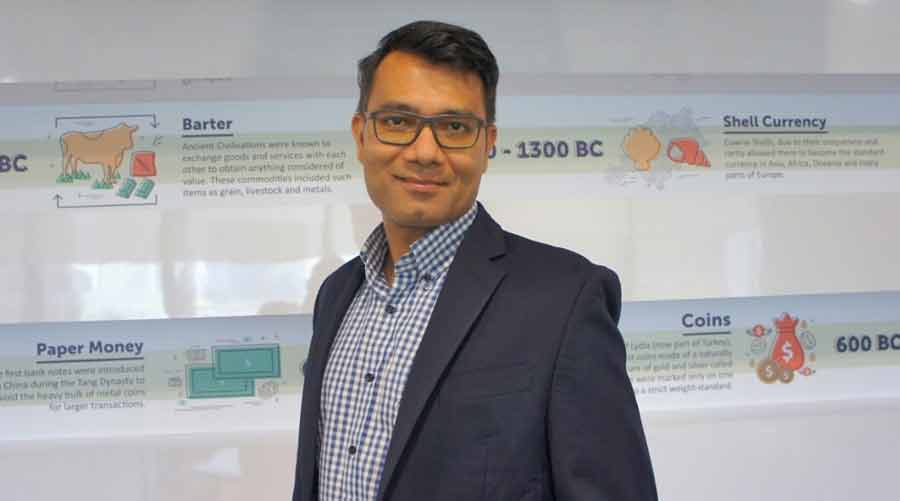India has the highest number of pending court cases in the world. Last year, the tally of unresolved legal disputes in the country crossed the five crore mark. Out of those, close to two lakh cases have been pending for more than 30 years in district and high courts alone. Various organisations have estimated that pendency of cases costs India between 1.5 to 2 per cent of its GDP every year.
With neither courts nor judges expected to grow exponentially, how can India’s judicial sluggishness be improved? This is the question at the heart of the work done by Fightright, which intends to “bridge the gap between the plaintiff or claimant and the justice they so desperately seek”. Incorporated in 2020 and having started its operations in October 2021, Fightright, based out of the 19th floor of Chowringhee’s Everest House, was founded by Nitin Jain (CEO) and Vishal Mangal (COO). “We were previously in the business of buying distressed assets and turning them around in four to five years’ time. With a cumulative investment of around $11 million, we had managed returns close to $47 million. Soon enough, it occurred to us that our forte was in litigation. That’s how Fightright was born,” explains Jain.
India needs litigation funding because justice is expensive and people do not have money

Nitin Jain and (right) Vishal Mangal co-founded Fightright in 2020 Courtesy Fightright
In claiming to fight for the rights of its clients (hence the name!), Fightright’s first task was to identify the biggest problems with the litigation system in India, which it diagnosed as “the presence of conflicting laws, the lack of judicial capacity, low judge-to-people ratio, and the dearth of finance and technical knowhow”. As one of the solutions, Fightright, which deals exclusively with commercial disputes right now, proposed litigation funding. “We wanted to make litigation scalable, which is where litigation funding came in. It’s a billion dollar industry abroad, but is scarcely available in a country like India, where justice is expensive and people don’t have money. What we decided is that instead of getting investors to buy out assets, we’d step in as the funders and bear all the costs of the litigation. In return, we’d charge a percentage of the monetary award as our service fee,” says Jain.
To that end, Fightright created a special purpose vehicle (SPV), a subsidiary of a parent company to mitigate financial risk, and is yet to be short of cases. “Without any marketing whatsoever, we’ve been getting cases from across the country. Particularly from SMEs and MSMEs, for whom a lot of pain points are eliminated through litigation funding,” says Jain, who nonetheless admits that many venture capitalists (VCs) are yet to buy into the concept in India, as “it’s still new for them”.
When Fightright began, most of its clients came from Kolkata. But over the past year or so, the clientele has diversified to include Delhi, Mumbai and Rajasthan. “Most of our cases are to do with land and money, often involving illegal acquisition and tenancy problems,” elaborates Jain, who reveals Fightright’s plans to open branches in Delhi and Mumbai besides its tech office in Bengaluru.
At the time of writing, Fightright manages claims in excess of Rs 270 crore, with its litigation funding model ensuring that clients do not have to worry about covering legal costs, paying attorney fees or putting their business or personal capital at stake. Additionally, as Jain describes: “Litigation funding frees up cash flow, allows litigants to hire better legal representation and transfers the risk of financial loss to the funder. For moneyed litigants, it offers an opportunity to maintain liquidity and spread risk, which could be vital in maintaining financial stability and allowing for other investments. Moreover, the input from the funding company, which is bound to perform due diligence, can offer valuable insights into cases.”
Apart from litigation funding, Fightright has another ace up its sleeve, something that is arguably even more transformative. Using its in-house artificial intelligence (AI) software called Chanakya, Fightright is preparing a database where lawyer performance and judge sentiment can be assessed through analytics. “In cricket, it’s possible to find out which batter is better against which bowler, how conditions affect players, who can handle a particular situation the best and all that,” says Jain, before adding with a smile: “What’s stopping us from doing the same for litigation?”
Using machine learning and “our comprehensive set of metrics”, Fightright has gleaned data from cases at all levels across the country, with some information proving far harder to obtain than others. With all this data at its disposal, Chanakya can now answer which lawyer is best placed to deal with a particular kind of case against a particular advocate in a particular jurisdiction. It can also look at past judgements and explore precedents to tentatively predict which way a judge is likely to lean on a matter. “We can’t influence the judicial process in any way. But what we can do is reduce the litigation life cycle by coming up with the best strategy for our clients,” says Jain, who is confident that Fightright will be able to assimilate the largest legal database in India over the next year or so.
“We have studied and discovered that a large number of cases in India drag on because of legal misguidance. Senior lawyers are either too busy or too expensive, and the legal advice that follows doesn’t have a long-term path in mind. In many cases, the lawyers are as confused as the clients,” says Jain. With Fightright’s assistance, the situation can change, as lawyers can be hand-picked based on their domain and case expertise, with the litigation funding model allowing clients to access the best talents without having to worry about the costs.
‘We don’t want people and organisations to waste their time, money and resources’

Variables and big data give Fightright the edge in today’s litigation landscape, feels Jain TT Archives
To double down on just how much AI can influence the resolution of commercial cases, Jain brings up the recent case of a company that lost an eviction suit against one of its tenants at the trial court, the appeal court as well as the Supreme Court. “We firmly believe that with our help, the company wouldn’t have had to bear these losses. In fact, we had reached out to them, but they didn’t want our help at the time. Even though they’ve lost in the highest court of the land, we’re still open to assisting them because we have a strategy in place,” says Jain, who also brings up the case of a “very prominent hotel chain in Kolkata, with a marquee property in Park Street” that is going down the same road, having litigated without success for more than 14 years.
“At the end of the day, we don’t want people and organisations to waste their time, money and resources. AI is making a number of industries cutting edge and we’re trying to do the same for litigation,” reflects Jain. Even though Fightright has no plans of taking up criminal cases anytime soon, it intends to make its analytics model publicly available at some point in the near future, with data on criminal cases, too.
“Variables and big data give us the edge. We want as many people as possible to benefit from that,” concludes Jain.


